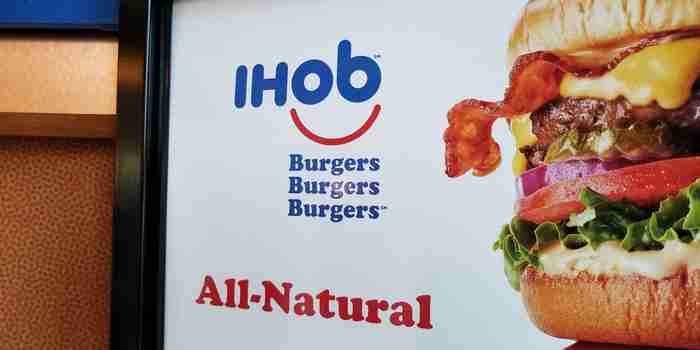Amazon selling sugary cereals at Whole Foods Like lots of other people, I was excited when Amazon bought Whole Foods. The whole premise of the deal was that the scale of Amazon would enable more people to access the quality, healthy food on offer at pricey Whole Foods. Opening up a premium brand to more consumers can be a great move, but that's not what Jeff Bezos and Amazon appear to actually be doing with Whole Foods so far. Lesson: Never forget your core mission. IHOP's half-baked IHOB stunt I'm all for clever, disruptive marketing. I understand what IHOP was going for -- these days lots of carb-conscious customers aren't excited about sitting down to a giant stack of starchy pancakes and IHOP wanted to get the word out that they offer alternatives. https://t.co/esdndK1iFm — Wendy's (@Wendys) November 24, 2017 You get that level of execution the same way you do in any other area of business -- you know what you're aiming for and then hire the right people to execute it. It's about creating structures to make sure you brand is executed consistently over time. Lesson: Responding to a crisis isn't just about on-off gestures. The more important work is setting up an architecture that ensures problems don't happen again in the future.
Through watching the stumbles of national brands, smaller businesses can learn what to do — and not do — to move up to the next level.

Opinions expressed by Entrepreneur contributors are their own.
It’s never been easier to build a brand. Right now with a little effort you can build a following on Instagram or Shopify, start selling stuff and create a nice small business for yourself. But, if you want to move things to the next level and become a real enterprise, you need to learn to market like the big guys.
Ironically, one of the best ways to do that is to watch what happens when they screw up. Branding failures aren’t just entertaining. By illustrating just how terrible the fallout can be if you get things wrong, they illustrate the importance of having the right principles and systems in place. Through watching the stumbles of national brands, smaller businesses can learn what to do — and not do — to move up to the next level.
Helpfully, some of America’s biggest companies have obliged with some pretty spectacular brand fails lately.
1. Amazon selling sugary cereals at Whole Foods
Like lots of other people, I was excited when Amazon bought Whole Foods. The whole premise of the deal was that the scale of Amazon would enable more people to access the quality, healthy food on offer at pricey Whole Foods. But, then recently I spoke to a few friends who reported seeing things like Honey Nut Cheerios on the shelves of their local Whole Foods.
Let me be clear: You’re not supposed to be able to buy Honey Nut Cheerios at Whole Foods. The brand experience is all about health and quality, not processed, sugar-laden junk. Opening up a premium brand to more consumers can be a great move, but that’s not what Jeff Bezos and Amazon appear to actually be doing with Whole Foods so far. Instead, they’re violating the basic promise of the Whole Foods brand, and risking diluting it beyond all recognition.
This isn’t just a temptation for behemoths like Amazon. Smaller brands face similar questions all the time as they start to grow and add…

COMMENTS